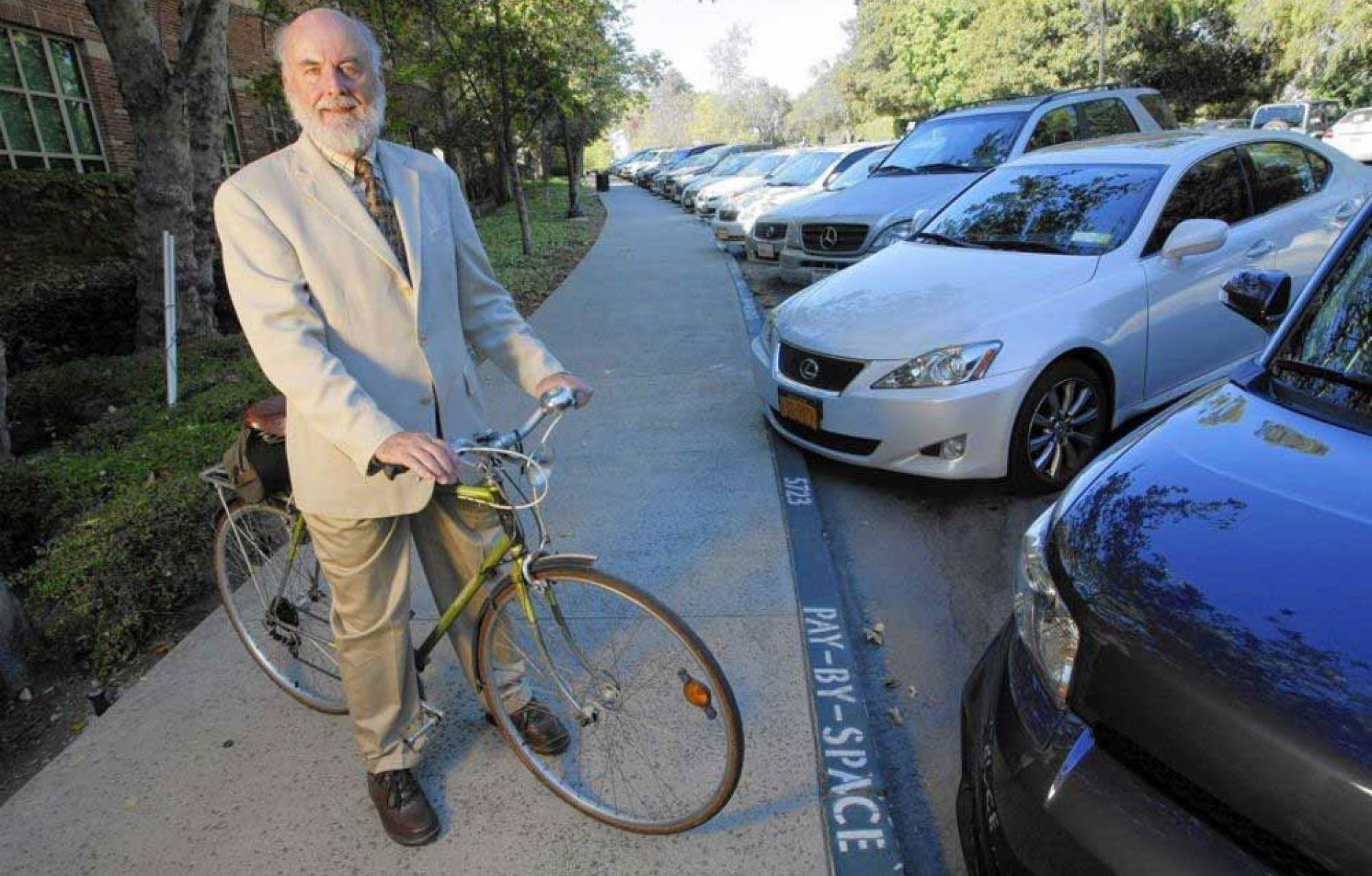
Donald Shoup had a major impact on cities
Donald Shoup died last Thursday at the age of 86, having made a greater impact on cities than all but a few urban planners in the last century.
Shoup’s rise to national prominence began 20 years ago with the publishing of The High Cost of Free Parking, an unlikely classic if there ever was one. The 734-page doorstop-of-a-book tackled a subject that most people consider dry and technical—and few urban planners took seriously at the time—the ubiquitous parking lots, spaces, and garages spread across the American landscape, and the invisible policies behind them.
Shoup, a UCLA professor of urban planning, was 66, an age when most practitioners and academics are winding down their careers. The High Cost of Free Parking made parking interesting and explained how it is vitally important. It kicked off an era of parking reform that is helping to remake cities and suburbs throughout America.
In 2023, Shoup won the Seaside Prize and was selected by Planetizen as one of the 10 most influential urban planning thinkers of the last century—noted among historical figures like Jane Jacobs, Le Corbusier, and Lewis Mumford and prominent present-day urbanists.
In the last two decades, Shoup became a cult figure and hero to young reformers—referred to as “Shoupistas.” Some called him “Shoup Dogg,” a remarkable sobriquet for a gentlemanly academic working in an obscure land-use planning field. Despite the attention, he never seemed to take himself too seriously.
“This is a devastating loss,” said CNU cofounder Stefanos Polyzoides, whose firm is based in Pasadena, where Shoup conducted early research. “The man was a field all by himself. And his humility and sense of humor were inspiring, if not infectious. I will personally miss him.”
Shoup picked one area of focus and stuck with it for nearly half a century. He latched on to parking reform in the late 1970s, when every city and town in America pursued a policy of providing ample automobile parking for every facility, cradle to grave—from hospitals, day-care facilities, schools, and churches, to employment offices, senior centers, and funeral parlors. Parking must be provided for every activity, and he asked, “Why?” and “What are the consequences?”
Parking reform in Pasadena helped to revive the city’s downtown, which Shoup described as a “commercial skid row” in the 1970s. Charging a market rate for street parking so that spaces were always available and dedicating the revenues to public services turned downtown into a thriving attraction that draws 30,000 visitors daily, he explained in a 2017 interview published in Public Square.
Most planners were skeptical of his arguments when The High Cost of Free Parking was released. “When the book came out, half the planning profession thought I was crazy and the other half thought I was daydreaming,” he told Public Square. “Now planners are beginning to think that the ideas were practical and sensible.”
Parking is one of the three big ideas that created the conventional suburbia we know today, he explains—the others were the separation of uses and limiting density so that people have to travel long distances to get from A to B. In The High Cost of Free Parking, he points out the often ridiculous nature of parking requirements.
The planning profession, in its eagerness to be comprehensive, has identified more than 600 different uses, each with its own parking requirement, Philip Langdon wrote in a 2005 review for New Urban News. He quotes Shoup: “A gas station must provide 1.5 parking spaces per fuel nozzle, and a mausoleum must provide parking spaces per maximum number of interments in a one-hour period. Why? Nobody knows.”
A large part of Shoup’s appeal is a folksy humor that resonates with many audiences, CNU President Mallory Baches wrote following Shoup’s Seaside Prize ceremony. “His approach to educating both academics and everyday folks about the costs of parking seems to give the impression that he’s letting you in on the joke of ridiculousness,” Baches explained to CNU members. “It’s led to his loyal fan base, of which many of you reading this are surely members just like me.”
In the last 10 years, parking reform has spread to cities and towns across America, helping to revitalize downtowns, promote infill development, and aid suburban retrofit. Many researchers have followed in Shoup's footsteps, some finding that conventional parking requirements impede the economies of cities. Buffalo, New York, got rid of parking requirements with its Green Code in 2017, and the city soon began growing in population again after six decades of shrinking.
The parking reform movement would not have happened in the same way without Shoup, who has seen his life’s work validated. Shoup was a rare planning academic who lived to see his ideas widely adopted by municipalities and praised by practitioners.




